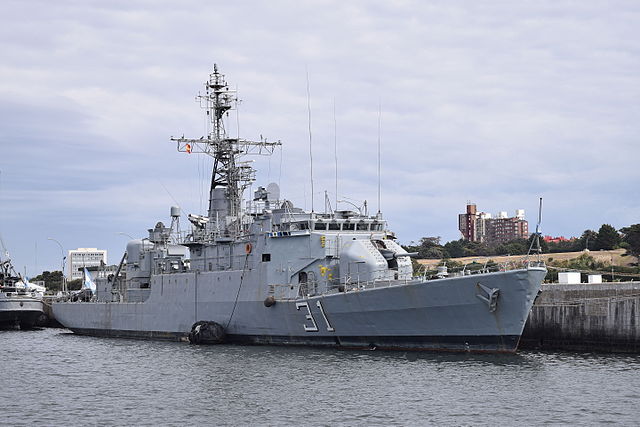1982 invasion of the Falkland Islands
The Invasion of the Falkland Islands, code-named Operation Rosario, was a military operation launched by Argentine forces on 2 April 1982, to capture the Falkland Islands, and served as a catalyst for the subsequent Falklands War. The Argentines mounted amphibious landings and the invasion ended with the surrender of Falkland Government House.
Argentine naval infantry AAV in Stanley
Site of Moody Brook Barracks, the island garrison for the Falklands. A small detachment of Royal Marines was stationed here from the 1960s until the invasion of 1982 when Argentine forces forcibly took the barracks and evicted the British troops. The barracks site is that of the old wireless station. Only foundations remain today.
ARA Drummond
The Falkland Islands is an archipelago in the South Atlantic Ocean on the Patagonian Shelf. The principal islands are about 300 mi (480 km) east of South America's southern Patagonian coast and about 752 mi (1,210 km) from Cape Dubouzet at the northern tip of the Antarctic Peninsula, at a latitude of about 52°S. The archipelago, with an area of 4,700 sq mi (12,000 km2), comprises East Falkland, West Falkland, and 776 smaller islands. As a British overseas territory, the Falklands have internal self-governance, but the United Kingdom takes responsibility for their defence and foreign affairs. The capital and largest settlement is Stanley on East Falkland.
Naval confrontation during the 1914 Battle of the Falkland Islands (painting by William Lionel Wyllie)
Government House in Stanley is the Governor's official residence.
Colony of southern rockhopper penguins on Saunders Island
Stanley, now officially a city, is the financial centre of the Falkland Islands' economy.







